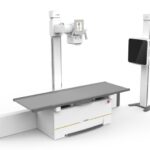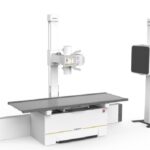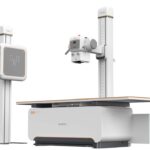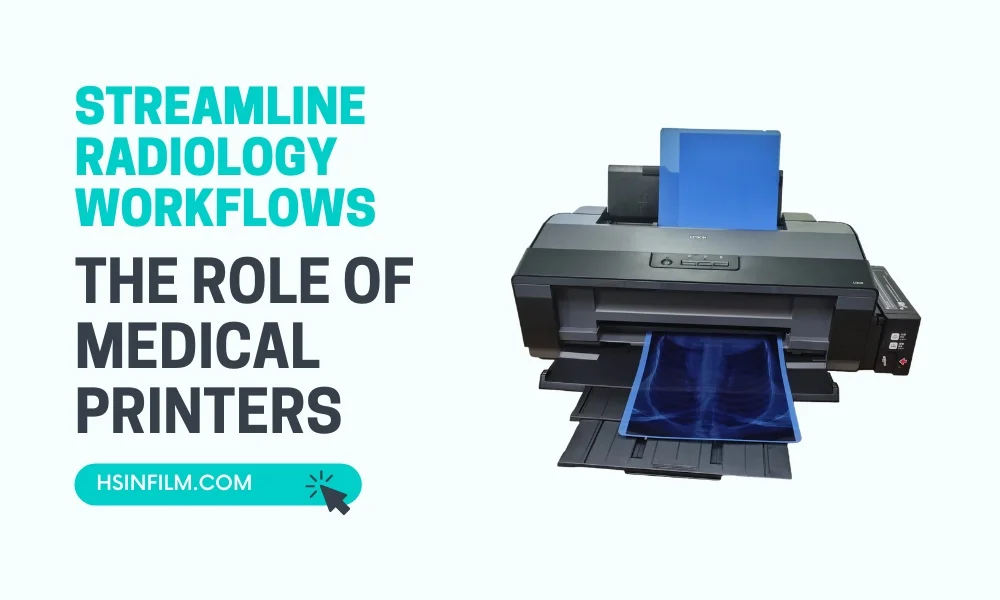Clavicle X-ray positioning is a fundamental aspect of diagnostic imaging, crucial for assessing various shoulder and chest conditions. A clear and accurate image relies on precise positioning techniques. Let’s delve into the essential aspects of understanding clavicle X-ray positioning, strategies for correct position, and challenges.
Table of Contents
Strategies for Correct Clavicle X-ray Positioning in Radiography
Accurate clavicle X-ray imaging is pivotal for diagnosing various shoulder and chest conditions. Proper positioning is the foundation for obtaining clear and diagnostically valuable images. In this guide, we’ll explore essential strategies for achieving correct clavicle X-ray positioning in radiography.
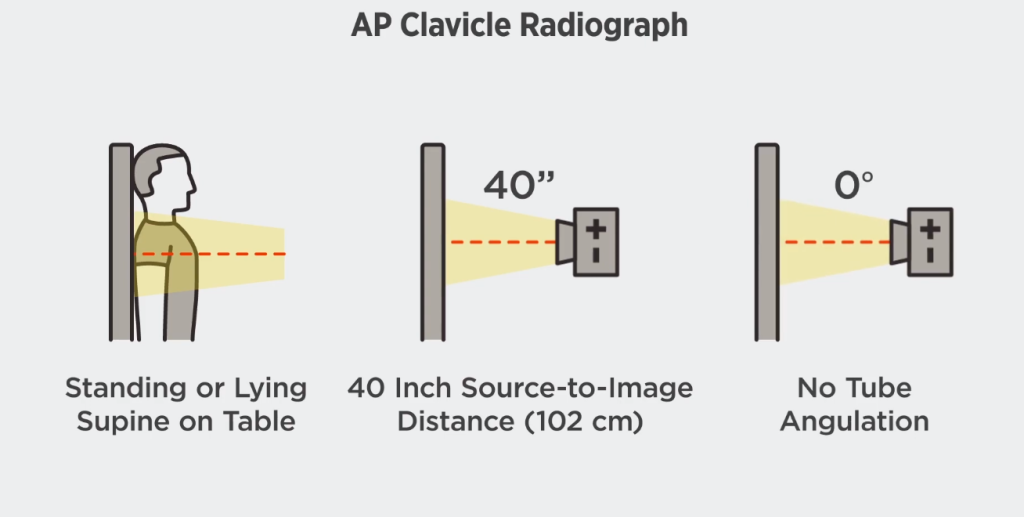
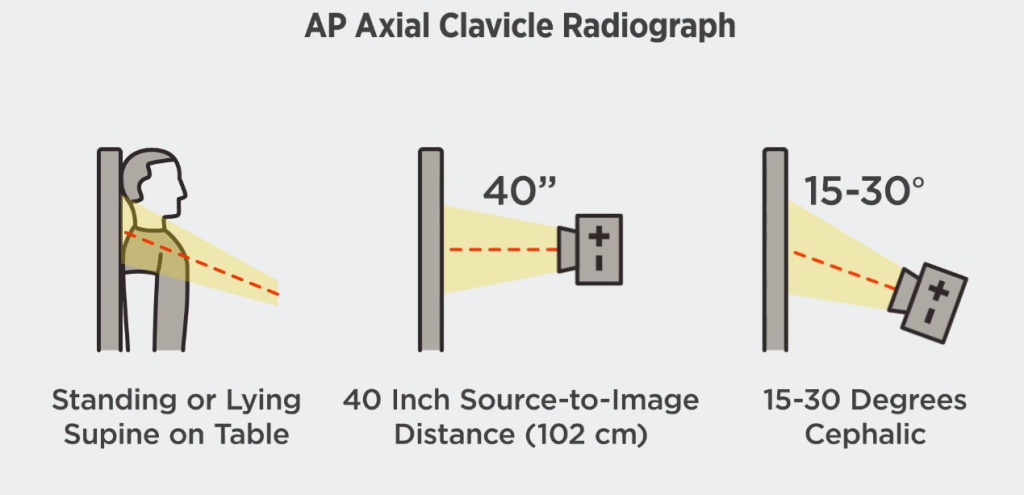
1. Patient Preparation and Communication
- Explain the Procedure: Begin by explaining the X-ray procedure to the patient, fostering cooperation and reducing anxiety.
- Ensure Comfort: Position the patient comfortably, emphasizing the importance of remaining still during image acquisition.
2. Standardized Anatomical Landmarks
- Identify Anatomical References: Clearly identify anatomical landmarks, including the sternoclavicular and acromioclavicular joints, to establish a standardized imaging protocol.
- Consistent Positioning: Consistent positioning based on anatomical landmarks ensures reproducibility and facilitates accurate comparisons over time.
3. True AP Projection for Bilateral Clavicles
- Centering the Midline: Center the midline of the clavicles to the image receptor for a true anteroposterior (AP) projection.
- Minimizing Rotation: Minimize rotation by ensuring the shoulders are in the same plane, aiding in symmetry assessment.
4. Oblique Projection for Detailed Assessment
- Oblique Views for Specific Cases: Employ oblique projections for detailed assessment of specific clavicle regions, such as the midshaft or acromial end.
- Angular Adjustments: Adjust the angulation to highlight the desired anatomical features while minimizing overlap.
5. Supine vs. Upright Positioning
- Supine for Trauma Cases: In trauma cases, opt for a supine position to minimize patient discomfort and obtain clear images.
- Upright for Functional Assessment: Use an upright position when assessing clavicular function, such as in cases of suspected instability or dysfunction.
6. Proper Collimation and Shielding
- Collimate Effectively: Proper collimation focuses the X-ray beam, reducing unnecessary exposure and improving image quality.
- Shielding for Safety: Utilize lead shielding to protect sensitive areas, ensuring patient safety and adhering to radiation protection principles.
7. Assessing Clavicle Rotation
- Equal Distance from Spinous Process: To assess rotation, ensure an equal distance from the spinous process to each clavicle end.
- Midline Alignment: Align the midline of the clavicles with the midline of the body for symmetrical visualization.
8. Evaluation of Bilateral Clavicles
- Compare Bilateral Clavicles: Always compare the bilateral clavicles in the same view to detect asymmetry or abnormalities.
- Evaluate for Pathologies: Assess for fractures, dislocations, or pathological changes, comparing both clavicles systematically.
9. Patient Cooperation in Scapular Downward Rotation
- Scapular Downward Rotation: Request the patient to elevate the unaffected arm during imaging to achieve scapular downward rotation.
- Reducing Overlapping Structures: This technique helps reduce overlap with the clavicle, enhancing visibility.
10. Continuous Education for Radiographers
- Training on Positioning Techniques: Radiographers should undergo continuous training on clavicle positioning techniques.
- Stay Informed: Stay informed about the latest advancements in radiography to enhance positioning skills and adapt to evolving practices.

Also read: Lateral Skull X-ray Guide
Challenges in Clavicle X-ray Positioning
Clavicle X-ray positioning is integral for accurate diagnostic imaging, but it comes with its set of challenges. Overcoming these challenges is crucial for obtaining clear and diagnostically valuable images. Let’s delve into the common obstacles encountered in clavicle X-ray positioning.
1. Patient Cooperation and Comfort
- Limited Mobility: Patients with shoulder injuries or discomfort may struggle to achieve the required positions, impacting the clarity of the X-ray.
- Communication Challenges: Some patients may find it challenging to understand and follow positioning instructions, affecting the overall success of the procedure.
2. Overlapping Anatomy
- Superimposition of Structures: Achieving clear views without overlapping structures, especially in the acromioclavicular joint region, can be challenging.
- Interference from Surrounding Tissues: The presence of adjacent anatomical structures, such as the ribs, may obscure portions of the clavicle.
3. Clavicle Rotation
- Inadvertent Rotation: Accidental rotation of the clavicle during positioning can lead to asymmetrical images, complicating the interpretation.
- Challenges in Identifying Rotation: It can be difficult to identify and correct clavicle rotation, particularly in trauma or uncooperative patients.
4. Scapular and Shoulder Positioning
- Scapular Overlap: Achieving a true anteroposterior (AP) projection is hindered by scapular overlap, affecting the visibility of the clavicle.
- Influence on Clavicle Alignment: Improper shoulder positioning may alter the alignment of the clavicle, leading to inaccurate representations.
5. Variability in Patient Anatomy
- Anatomical Diversity: Patients exhibit diverse clavicle shapes, lengths, and orientations, making it challenging to standardize positioning for every individual.
- Customization Needs: Radiographers must adapt positioning techniques based on the unique anatomical features of each patient.
6. Obesity and Body Habitus
- Technical Limitations: In obese or larger patients, obtaining clear images can be hindered by technical limitations related to X-ray penetration and scatter.
- Increased Superimposition: Increased soft tissue may contribute to increased superimposition of structures, reducing image clarity.
7. Trauma Cases and Limited Mobility
- Pain and Limited Range of Motion: Trauma patients may experience pain and have limited mobility, posing challenges in achieving optimal positioning.
- Importance of Quick Imaging: Quick acquisition is crucial in trauma cases to minimize patient discomfort and obtain images before changes in positioning occur.
8. Radiation Exposure Concerns
- Proper Collimation for Minimizing Exposure: Balancing the need for a clear image with minimizing radiation exposure can be challenging. Proper collimation is crucial for achieving this balance.
- Ensuring Safety Protocols: Ensuring safety protocols and using shielding are essential to mitigate radiation risks, especially in repeated imaging.
9. Limitations in Pediatric Patients
- Small Anatomy: Clavicles in pediatric patients are smaller, and obtaining detailed images can be challenging.
- Cooperation Challenges: Pediatric patients may have difficulties following positioning instructions, requiring additional measures for successful imaging.
10. Training and Skill Standardization
- Varied Skill Levels: Radiographers may have varying levels of expertise in clavicle positioning, impacting the consistency of image quality.
- Continuous Training Needs: Regular training and updates are essential to standardize skills and address emerging challenges in X-ray positioning.
Addressing these challenges requires a combination of technical proficiency, effective communication with patients, and ongoing education for radiographers. Overcoming these obstacles ensures that clavicle X-ray positioning contributes to precise diagnoses and optimal patient care.
Conclusion: Precision in Clavicle Imaging
Achieving precise clavicle X-ray images demands a combination of technical expertise, patient cooperation, and adherence to standardized protocols. By understanding challenges and implementing these strategies, radiographers can contribute to accurate diagnoses and improved patient care in the assessment of clavicular conditions.
HSIN Film – Your Partner in Precision
Our films not only address the challenges but elevate the entire process. HSIN Film’s products ensure that every clavicle X-ray is a masterpiece. HSIN Film steps into the limelight with a groundbreaking suite of products designed to redefine clavicle X-ray positioning. From conquering challenges to mastering precision. At the heart of every successful clavicle X-ray is the clarity our Medical Dry, Thermal, and Laser Films provide. Say goodbye to the days of blurry, ambiguous images; with HSIN Film, precision is the new standard.

